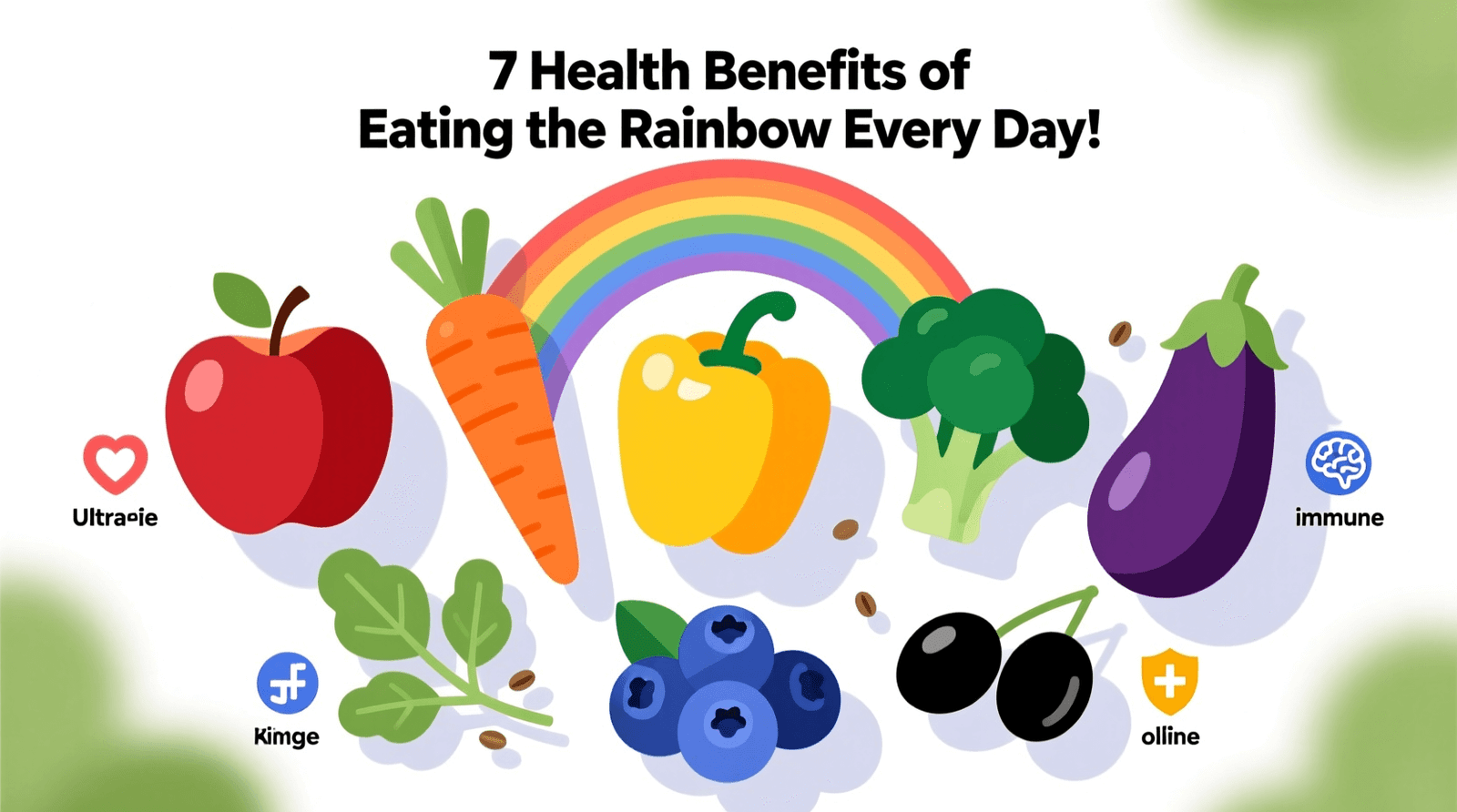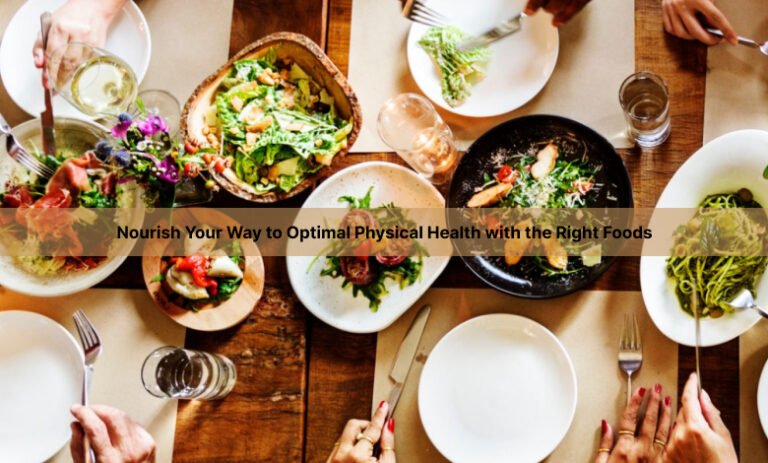7 Health Benefits of Eating the Rainbow Every Day!
I’ll be honest. For the longest time, I thought “eating the rainbow” was a cute phrase people threw around to make kids eat vegetables. Like, how serious could that advice really be? Eat red, green, yellow… sure, sounds fun. But does it actually do anything?
Then I actually tried it. I stopped eating the same beige meals over and over—rice, potatoes, bread, chicken—and started adding color. Not all at once, but little by little. A handful of blueberries here, a few spinach leaves there, maybe a slice of papaya instead of biscuits with tea. And wow, I noticed changes. More energy. Fewer stomach issues. My skin even looked fresher.
That’s when it clicked. Maybe this rainbow thing isn’t just about looks—it’s about balance.
Even the best nutritionist in Pune says the same: don’t overcomplicate your diet, just aim for more colors on your plate. It really is that simple.
What Does “Eating the Rainbow” Even Mean?
It means eating fruits and vegetables of different colors every single day. Each color comes with its own nutrients. Think of it like nature’s color code.
- Red foods → tomatoes, strawberries, watermelon. They’ve got lycopene and anthocyanins.
- Orange and yellow foods → carrots, mangoes, corn. Packed with beta-carotene and vitamin C.
- Green foods → spinach, broccoli, kale. Full of chlorophyll, folate, and iron.
- Blue and purple foods → blueberries, eggplants, purple cabbage. Loaded with antioxidants and anthocyanins.
- White and brown foods → garlic, mushrooms, onions. They bring phytonutrients like allicin and potassium.
When you mix them throughout the week, you’re basically giving your body a buffet of everything it needs.
7 Health Benefits of Eating the Rainbow Every Day
1. Stronger Immunity
Nobody enjoys being the person who’s always sniffling or catching every seasonal bug. Eating a variety of colors can really help here.
- Citrus fruits and bell peppers = vitamin C.
- Spinach and broccoli = iron and folate.
- Garlic (yes, boring white garlic) = natural infection fighter.
I used to get colds every winter, without fail. The year I started eating more colorful foods—especially oranges and spinach—I barely fell sick. Coincidence? Maybe. But I’m sticking with it.
2. Better Gut Health
Your gut is like an ecosystem. It needs diversity. If you only feed it the same foods all the time, the bacteria get lazy.
- Blueberries keep the good bacteria happy.
- Bananas are great for digestive balance.
- Cruciferous veggies like cabbage give you fiber and sulfur compounds that help things move along.
Personally, when I eat more colorful veggies, my stomach feels lighter. Less bloating. More… normal. Which is not glamorous to talk about, but very real.
3. Lower Risk of Chronic Diseases
This is the big one. Eating the rainbow isn’t just about feeling good today—it’s about staying healthy in the long run.
- Tomatoes (lycopene) support heart health.
- Purple cabbage and blueberries (anthocyanins) protect blood vessels.
- Leafy greens lower diabetes risk.
Studies keep showing that people who eat a wide variety of colorful foods have a lower chance of serious health problems. And honestly, it makes sense. If your body is always getting the nutrients it needs, it’s stronger against future issues.
4. Healthier Skin
Here’s something I learned the fun way. What you eat shows up on your skin.
- Carrots and sweet potatoes = vitamin A for skin health.
- Citrus fruits = vitamin C for collagen.
- Avocados = healthy fats that keep skin soft.
A few years ago, I swapped my evening chips for papaya and nuts. Within a couple of weeks, my skin looked different—brighter. A friend even asked if I’d started some fancy skincare routine. Nope. Just snacks that happened to be orange and green.
5. Improved Brain Function
This one surprised me the most. Your brain loves colorful foods.
- Blueberries are famous for boosting memory.
- Leafy greens protect against mental decline as we get older.
- Beets improve blood flow to the brain.
Whenever I add blueberries to breakfast, I notice I’m sharper throughout the morning. It could be in my head. But I’ll take the extra focus either way.
6. Natural Energy Boost
Instead of depending on caffeine all the time, colorful fruits and veggies give steady energy.
- Bananas and oranges = natural sugars and potassium.
- Greens = iron, which prevents tiredness.
- Berries = fiber, which gives slow-release energy.
I used to crash hard around 3 pm and grab another coffee. Now, if I have a bowl of fruit—say, mango with kiwi—I can actually push through the afternoon without feeling half-asleep.
7. Better Eye Health
Carrots are the classic “eye food,” but they’re not alone.
- Orange foods like pumpkin and corn = beta-carotene, lutein, zeaxanthin.
- Leafy greens = extra protection for aging eyes.
- Blueberries = support night vision.
If you spend all day staring at screens (and let’s be real, most of us do), your eyes will thank you for the extra help.
How to Add More Colors (Without Overthinking It)
This part can be fun. Don’t think of it as a diet. Think of it as painting your plate.
- Toss spinach in your eggs.
- Mix berries into yogurt or oats.
- Use different colored peppers in stir-fries.
- Add purple cabbage to salads.
- Keep carrot sticks and apple slices handy for snacks.
My small rule? Every time I shop, I grab at least three different colors of produce. That way, variety is already built into my meals.
What the Best Nutritionist in Pune Says
The best nutritionist in Pune has this advice: stop over-focusing on numbers and calories. If your plate looks dull, your nutrition probably is too.
She suggests one simple challenge: when you’re at the market, buy at least one fruit or veggie from each color group. It forces you to try new things and ensures your meals are naturally balanced.
I tried this once and came home with red peppers, spinach, mangoes, blueberries, and mushrooms. That week, my meals were so much more exciting. And I didn’t feel like I was “dieting”—I just felt like I was eating better.
FAQs About Eating the Rainbow
What are the health benefits of eating the rainbow every day?
It helps with immunity, digestion, disease prevention, skin health, brain focus, energy, and eye protection.
Is it better than supplements?
Yes. Whole foods have fiber, antioxidants, and plant compounds that pills can’t replace.
Can kids benefit?
Absolutely. Colorful meals help kids with immunity, focus, and growth. Plus, food looks more fun.
What if I don’t like vegetables?
Start small. Add one new color each week. Potatoes today, carrots tomorrow, spinach next week. Your taste buds adjust.
What does the best nutritionist in Pune suggest for picky eaters?
Smoothies. Blend spinach, mango, banana, and berries. It tastes sweet, and the greens vanish into the mix.
Eating the rainbow every day isn’t about perfection. It’s about balance. You don’t need to stress over every nutrient if you’re eating a mix of colors.
Just ask yourself: how many colors are on my plate today?
That question has changed the way I shop, cook, and eat. And honestly, food is more enjoyable when it’s colorful.
So next time you’re at the market, don’t stop at potatoes and onions. Pick up a red pepper, a bunch of spinach, maybe some blueberries or purple cabbage. Your body will thank you, and so will your future self.







